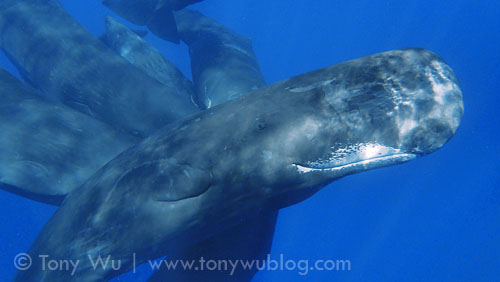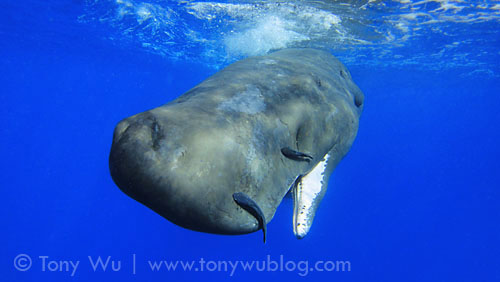I'm heading out shortly to the island of Bohol in the Philippines.
It's been a long time since I've visited the area...something like eighteen years or so...which means that for all practical purposes, I know nothing about the place.
This is an unscheduled excursion, in the sense that I didn't plan it far in advance like I do for most of my trips. I'm heading over there to do a bit of work with Sony (which means I really have to pay attention to what I'm doing!).
I can't really say much more than that at this point, but I can post a couple of photos that I took earlier this year in Dominica with a Sony DSC-TX5, which is a compact camera that's ok to take into the water as-is (i.e., no housing required), rated to a depth of three metres.
Here's a bunch of sperm whales gathered just under the surface:

And here's a shot of a juvenile sperm whale swimming straight toward me:

The reason I'm posting these pictures is to illustrate how far digital technology has come. Sure...given a choice, I'm always going to opt for a high-end DSLR, but one thing I constantly tell people who write to me asking for advice about which camera to buy is that just about every camera made these days is capable of producing fantastic results.
These photos are proof.
Of course, there are differences between a $300 camera and a $3000 camera. There have to be.
But it's more important to understand and work with the capabilities and limitations of the camera you have, than to fret over the functions of a camera you don't have or can't afford.
In the case of the Sony DSC-TX5...I knew that the camera is waterproof to three metres (that's slightly less than 10 feet for the metrically challenged), so all I had to do was find cooperative sperm whales in clear, shallow water with good light. Easy!